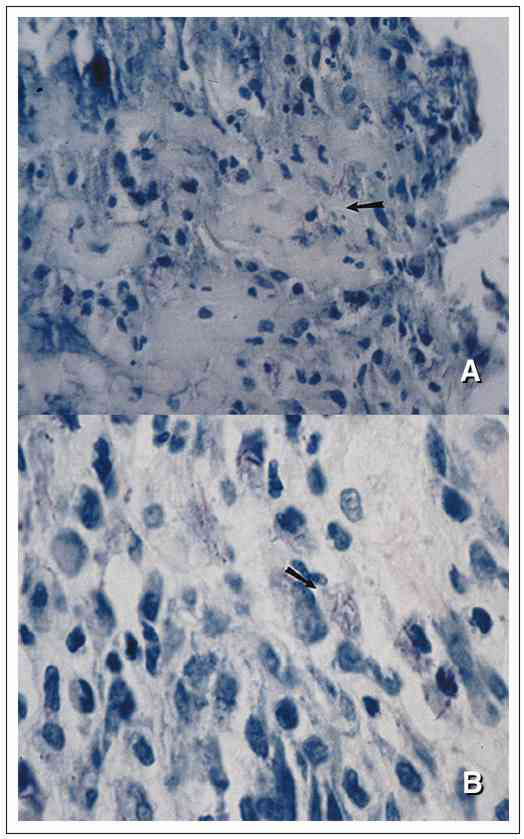Volume 5, Number 3—June 1999
Synopsis
Emergence of a Unique Group of Necrotizing Mycobacterial Diseases
Figure 2 A and B

Figure 2 A and B. Active disease histopathologic sections of soft tissue stained for acid-fast bacilli from a patient with a Mycobacterium marinum infection. In A, the arrow indicates localized necrosis, and in B, the arrow indicates predominance of intracellular bacilli. (Slide courtesy of Arthur B. Abt and Leslie Parent, Penn State Geisinger Health System and Pennsylvania State University College of Medicine, Hershey Medical Center, Hershey, Pennsylvania.)
Page created: December 10, 2010
Page updated: December 10, 2010
Page reviewed: December 10, 2010
The conclusions, findings, and opinions expressed by authors contributing to this journal do not necessarily reflect the official position of the U.S. Department of Health and Human Services, the Public Health Service, the Centers for Disease Control and Prevention, or the authors' affiliated institutions. Use of trade names is for identification only and does not imply endorsement by any of the groups named above.